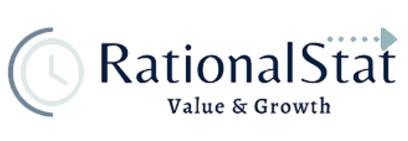
Even as businesses struggle through the aftermath of the pandemic supply chain crisis continuing economic difficulties as well as political turmoil have created grave challenges to the sustainability as well as the integrity and strength of the supply chain in the world.
With the booming demand, coupled with labor shortages, continued external events, and extreme complexity, it becomes ever more crucial for companies to create better-forecasting systems that can reduce the risk and enhance the resilience of the supply chain.
Procurement and supply chain professionals are struggling to maintain the ship because of:
- Data mismanagement
- Transparency of the asset
- Inefficient handling of stock
- Ineffective Supply Chain Risk Management
- Ineffective transportation/logistic management
The Internet of Things (IoT) can help companies to pass these challenges by deriving faster and more accurate information while keeping human input to a minimum. Internet of Things innovations and installments are key enablers for digital supply chains, helping businesses to drive improved efficiency, transparency, and sustainability.
What is the Internet of Things (IoT)?
The Internet of things (IoT) refers to the physical object (or groups of them) that are equipped with sensors, processing capability software, and other technologies that enable the exchange of data with other devices or systems via the Internet or other networks of communication. In the past, the Internet of things has been called a false term since devices did not have any connection to the internet. All they needed was a connection to the network and individually capable of being addressed.
9 Ways IoT is revolutionizing Supply Chain Management
1. Forecasting of inventory
The collection of data intelligence and pattern analysis over time provides precise forecasting and intervention if an error occurs. It also provides production planners, inventory planners as well as procurement executives with more data and forecasting accuracy when making decisions for executive decision-making on purchasing, manufacturing, or selling products.
2. Tracking and shipping of assets and shipments
IoT-related systems like RFID (Radio Frequency Identification) and global SIMs give instant access to supply chain executives to identify the item or asset, allowing them to make use of real-time data to determine, track and assess what is the condition of an ordered item or an existing asset. Instead of recording the information manually or using conventional inventory equipment managers now have access to software that automates data gathering and gets an immediate update on the condition of all assets.
3. Maintenance & Repair
IoT-driven solutions are able to collect information like temperature, humidity, as well as malfunctions in machines. It can be utilized by cloud computing applications to track the operation in real time and provide transparency. The cameras can scan the parts of machines, like blades, in order to send warnings for maintenance that are predictive. Production facilities that incorporate sensor networks into their machinery could thus improve uptimes, decrease operational costs and increase the overall quality of service.
4. Quality Control
Furthermore, IoT-driven systems can aid product managers in managing and monitoring production quality as well as production processes. IoT scanners can analyze raw materials to look for specific characteristics, like color, paint color, or fabric composition, in order to ensure accuracy and quality before they are utilized in an end product.
5. Monitoring of storage/conditions
Sensors for environmental conditions allow the management of supply chains to monitor the conditions of shipping and then proactively react to changes in the shipping conditions. IoT solutions can collect information regarding the temperature inside the vehicle as well as humidity, pressure, and other elements that could affect the integrity of the product and trigger automatic adjustment of the condition.
6. Increased Visibility
IoT can allow supply chain executives to connect equipment, vehicles, and other devices for real-time updates on the status of jobs. This provides an entire supply chain view that spans from the factory to the end user, through the warehouse. Therefore, instead of having a job status as 'in transit managers will be informed of the exact position on the truck. They can take quick decisions to keep items moving at a rapid pace.
7. Inventory Control
Controlling inventory is an essential component of supply chain and warehouse management as well as supply chain management. IoT provides significant benefits in this field. Utilizing the latest IoT sensors that track and analyze the inventory position and levels Supply chain professionals can build a precise and current tracker of inventory.
8. Warehouse Automation
It is predicted that the automatization of supply chain processes will keep growing in importance, with a particular focus on warehouses. A lot of them have begun to look like something out of a sci-fi flick. As businesses automatize more and more warehouse work and processes, they'll require accurate and readily available information to run the automated systems.
9. Paperwork Management
Paperwork is an all-too-common issue for employees and is particularly problematic when it comes to last-mile logistics, in which the burden is usually on truckers. With the help of smart logistics tools, companies can streamline most time-consuming and cumbersome paper-based tasks, like checking the bond of a trucker's freight broker or processing a bill of lading, which is a formal document that is issued by a shipping company to acknowledge the receipt of the cargo to be shipped.
Get in touch with us to learn more about RationalStat's offerings.

Divyanshu Sharma
Co-founder and Director at RationalStat
Divyanshu is an experienced market research consultant. He helps growth-driven organizations and entrepreneurs understand market entry prospects, industry assessment, and grow their revenue strategically.







You must be logged in to post a comment.